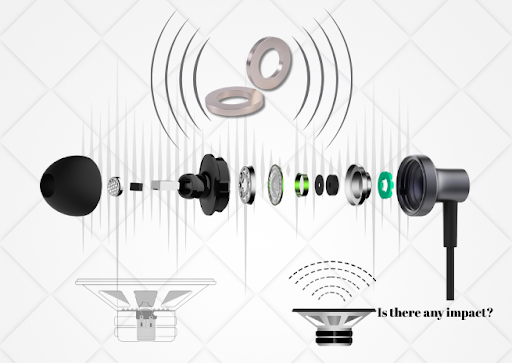Will NdFeB magnets cause permanent damage to headphones?

Strong 8k brings an ultra-HD IPTV experience to your living room and your pocket.
As an indispensable tool in our daily lives, headphones are widely used in various settings, including work, entertainment, and study. However, when headphones accidentally come into contact with strong magnets, many users worry whether this will cause permanent damage. Someone once shared an experience: the sound quality of expensive headphones seemed to become "rough" or unclear after brief contact with neodymium magnets, which raised a common question: Do NdFeB magnets cause irreversible damage to headphones? This article will discuss the characteristics of NdFeB magnets, the structure of headphones, and the possible effects of the interaction between the two to help you understand the truth and protect your headphones.
The internal structure of headphones
NdFeB magnets are one of the most powerful permanent magnetic materials currently available. To understand whether NdFeB magnets can cause damage to headphones, you first need to understand the working principle of the core component of headphones - the speaker. The speaker of a headphone is usually composed of a driver, a diaphragm, and a magnet. Depending on the type of headphone, the driver is mainly divided into the following two types:
Dynamic driver
The dynamic driver is the most common type in most consumer-grade headphones. It converts electrical signals into sound by generating a magnetic field through a built-in permanent magnet, driving the coil and diaphragm to vibrate. The diaphragm is typically made of a thin, lightweight material and is responsible for generating sound waves. The precise combination of the magnet and the coil ensures the clarity and dynamic range of the sound quality.
Balanced armature driver
Balanced armature drivers are standard in high-end in-ear headphones and have a more complex structure. It utilizes an electromagnetic coil to drive a precision metal arm, producing sound through vibration. This type of driver is less sensitive to external magnetic fields because its magnetic circuit design is typically relatively closed, allowing it to effectively shield external interference.
The diaphragm and driver of the headphone are typically protected by a metal or plastic casing that meets certain protection standards (such as IP2X) to prevent dust, foreign objects, or external magnetic fields from directly contacting the internal components. The original intention of the headphone design is to resist the interference of various external factors during daily use, so under normal circumstances, the impact of external magnetic fields on the headphones is minimal.
The potential impact of neodymium magnets on headphones
Although headphones are designed to resist most external interference, people may be concerned about the following potential impacts when neodymium iron boron magnets are close to headphones:
Diaphragm deformation:
The diaphragm is the core component of the headphone speaker and is directly responsible for the production of sound. If the magnetic field of a strong magnet acts directly on the diaphragm, it is theoretically possible that the diaphragm material is unevenly stressed and deformed. However, the diaphragms of modern headphones are usually made of high-strength materials and are protected by a shell or grille. The external magnetic field must be trong tenough o penetrate the protective layer and cause permanent damage to the diaphragm. In daily use scenarios, it is almost impossible to achieve such strength with brief contact with neodymium magnets.
Internal magnet misalignment
The neodymium magnets in dynamic drivers are fixed in the speaker frame. If a strong external magnetic field acts on the headphones, it may theoretically interfere with the magnetic field distribution of the internal magnets and even cause a slight shift in their position. However, the design of headphones usually ensures the stability of the internal magnets unless they are subjected to extreme external forces or exposed to extremely strong magnetic fields for a long time, which rarely happens.
Magnetization of metal housing
If the housing of the earphones is made of metal, the external neodymium magnet may cause the housing to be slightly magnetized. This magnetization is, in most cases, of a uniform nature, and thus, it will not cause any problems for the driver. The presence of magnetization in the housing will only result in a short-term effect, and the magnetization effect will slowly disappear with time.
Conclusion
On the whole, the possibility of NdFeB magnets causing permanent damage to the earphones is extremely low, especially in the case of brief contact. The speaker design of the earphones is optimized to effectively resist common external magnetic field interference. The diaphragm and internal magnets are usually protected by the housing and are difficult to be directly affected by external magnetic fields. With proper storage and maintenance, your earphones can maintain high-quality audio performance for a long time. Whether it is daily commuting, music appreciation, or professional monitoring, protecting your earphones, will bring you a long-lasting, high-quality experience!
Note: IndiBlogHub features both user-submitted and editorial content. We do not verify third-party contributions. Read our Disclaimer and Privacy Policyfor details.





